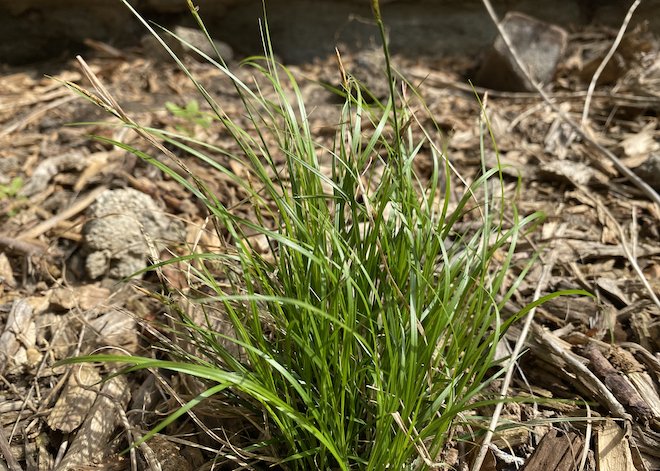This week: Pennsylvania Sedge, a Grassy Groundcover
Hello!
Native sedges have been getting good press lately as groundcovers and possible turf grass replacements. One of the more widely available is Pennsylvania Sedge (Carex pensylvanica). It’s a good choice because it only grows to 6-12 inches, stays green most of the year, tolerates full sun, thrives in the shade, and handles dry or moist soils. So, you could plant it practically anywhere—from dry slopes to shady spots where grass won’t grow.

It is appealing as a turf-replacing groundcover because it has a floppy grass look and can handle light foot traffic. While you might be tempted to grow it from seed, it can be tricky to germinate, so a better strategy is to start with potted plants or plugs. It may reseed itself over time, but more interestingly, it spreads by rhizomes—three inches annually in dryer conditions and as many as eight in moist settings. Divide this plant over the years (or break it into pieces straight from the grower’s pot) to cover more ground and get more bang for your buck. I have a patch I’ve been dividing and moving around for years; it withstands the disturbance.
Pennsylvania Sedge flowers in the spring, but the blooms are insignificant. Only insects will genuinely appreciate them! Once the sedge goes seed, it will also feed the birds. And did I mention deer tend to avoid it? There’s a lot to like about Pennsylvania Sedge.
Elsewhere:
Everyone’s favorite 30-inch salamander, the Eastern Hellbender, is again proposed for federal protection under the Endangered Species Act. Learn more about the native amphibian and what it means to be covered under the Endangered Species Act in this article from The Allegheny Front.
Have a great week,
Julie